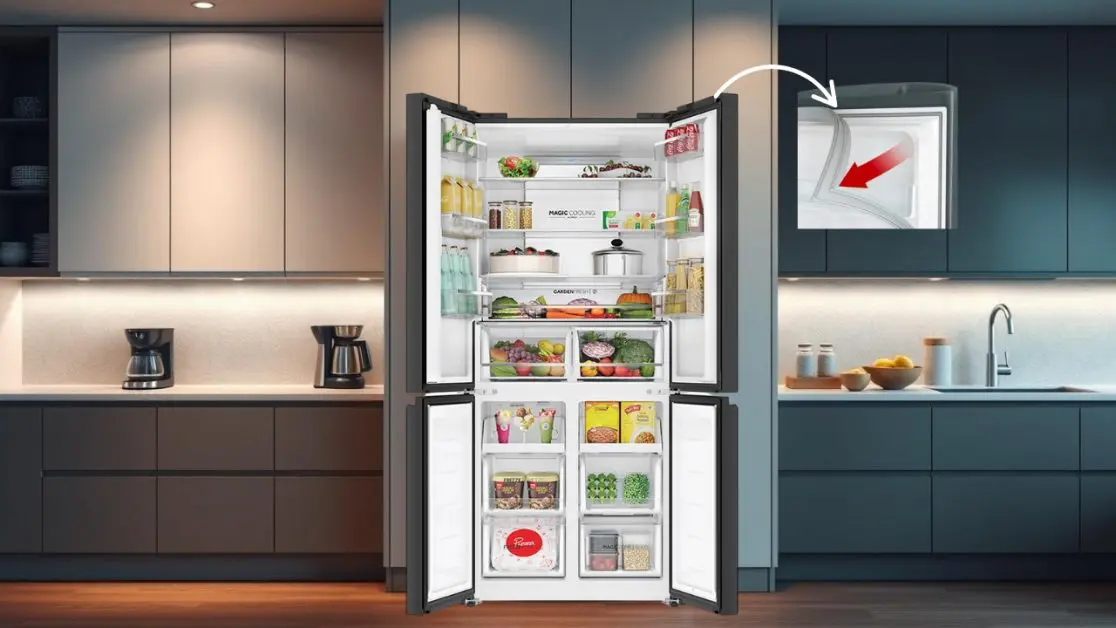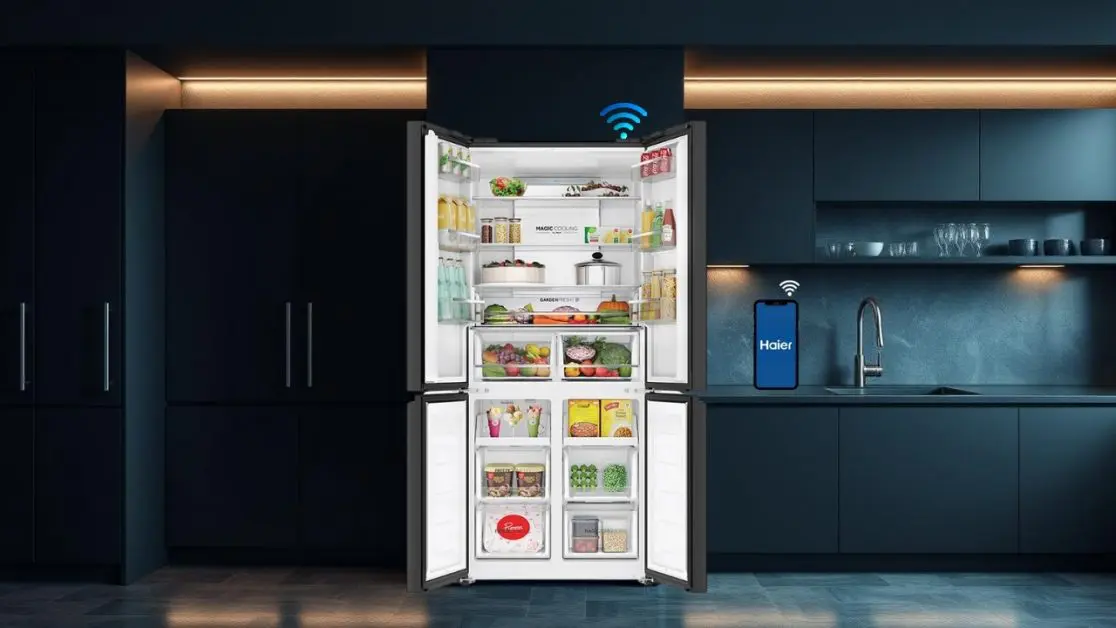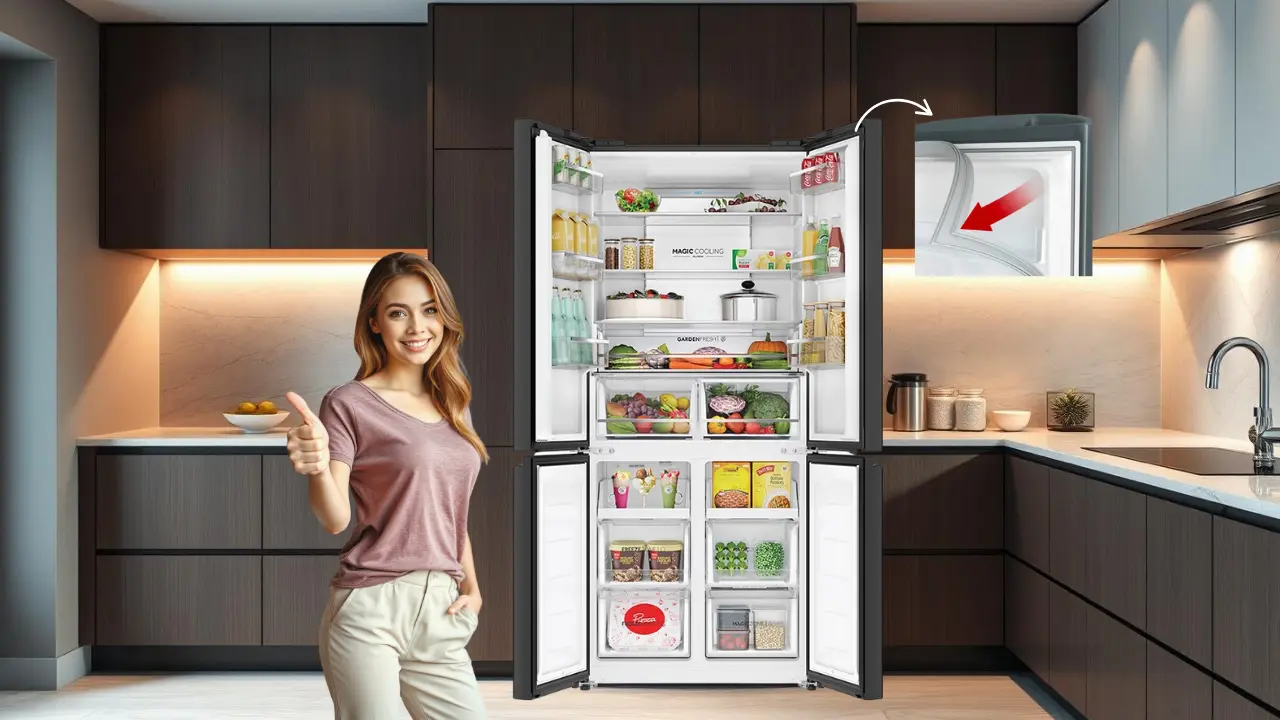Have you ever opened a fridge and noticed a strange smell?
Even if the food appears to be okay, that odor indicates there is some bacteria. Smell has an underlying odor.
The truth is, hygiene aside, refrigerators can also become a worrying problem when it comes to bacteria growth.
The anti-bacterial gasket is one of the least known but yet very important features in this regard. It’s an often ignored detail which has a lot of influence when it comes to food safety.
The current trend in Indian families is to use more modern and sanitary appliances, particularly in urban and semi-urban areas.
Making premium choices in refrigerators like 4 door refrigerators goes beyond simply keeping things cold—they take proactive measures in food preservation.
Explore how anti-bacterial gaskets can make a substantial difference and what other hygiene technologies you may want to look for in a refrigerator, especially if food steadiness and safety are concerns in a household. Let’s start!
What Is An Anti-Bacterial Gasket?

The gasket itself is the flexible strip bordering the refrigerator doors that ensures a proper seal when closed. While it is designed mainly to retain cold air within and warm air outside, premium refrigerators now use gaskets made with anti-microbial materials to do even more. These materials are impregnated with antibacterial, anti-mold, yeast, and antimicrobial additives.
In the wonderful construction of modern fridges, these gaskets help in providing a big reduction in food contamination because of cleaner environments in the fridge. Simply put, the gasket is not merely a passive seal. It is an active seal and defense against microbial intrusion.
Why Bacteria in the Fridge is a Real Concern

Most people perceive refrigerators as safe enclaves. But most chilling temperatures will not prevent the growth of very common bacteria like Listeria monocytogenes, E. coli, and Salmonella.
Consider These Risks:
- Cross-contamination of raw meats with vegetables
- Old leftovers
- Potentially hot spaces for bacteria
The accumulation of moisture may cause nooks to become areas of growth.
As one of the most contacted regions of the appliance, the fridge door area—particularly the gasket—requires constant contact, making it one of the dirtiest regions of the appliance. If left uncleaned, or better yet, unmaintained by a design permanently warding off bacteria, it can compromise the hygiene of the entire refrigerator.
How Do Anti-Bacterial Gaskets Assist?
This is how these gaskets aid in overall food safety:
| Feature | Functionality |
| Antimicrobial Material | Prevents growth of bacteria, mold, and mildew |
| Airtight Seal | Maintains internal temperature for stable maintenance of microbes |
| Easy-To-Clean Design | Usually made up of smooth, wipeable surfaces |
| Odor Control | Lowers the annoying presence of bacteria leading to rancid smells |
| Prolonged Item Freshness | Keeps the items fresh for an extended period, such as fruits, vegetables, and dairy products |
Lowering dangers of contamination means these gaskets help minimize spoilage, making it crucial in an Indian kitchen where leftover food, raw perishable food, and even partially prepared food sit haphazardly waiting to be stored.
Going Beyond Gaskets: Full-System Hygiene in Modern Refrigerators
Modern refrigerators are equipped to be complete hygiene ecosystems—not simply cool boxes. The design of the fridge reinforces the use of anti-bacterial gaskets and other innovations that maintain the safety and freshness of food. For example, some advanced refrigerators offer:
ABT (Anti-Bacterial Technology)
This technology is present in select high-end models and removes 99.99% of bacteria and odors actively. It continuously works to purify the air within the refrigerator so that the food remains safe and fresh for a longer duration of time. ABT, unlike surface-only protection, counteracts airborne dangers by treating the circulating air.
Deo Fresh Technology

Though it doesn’t actively oxidize the bacteria, it reduces odor based on air purification. This prevents sweets, curries, and dairy from combining their scents, which is very useful in Indian households.
Garden Fresh Box
This large vegetable box is specially designed for better air circulation for different produce. Additionally, it prevents the mixing and optimizes humidity, which is critical for leafy vegetables and herbs that wilt easily.
Sun Lit Interior
Some higher-tier versions have an automated lighting feature that simulates the glow of natural sunlight, further brightening the interior and preventing mold growth in dark areas. The visual sharpness also aids in seeing food that is starting to go bad, so it can be dealt with before it becomes a problem.
Temperature Control: A Silent Food Safety Hero
Refrigeration isn’t simply lowering the temperature. It involves maintaining exact temperature zones of various sections within the fridge. Improper cooling is one of the biggest contributors to foodborne illness outbreaks.
Temperature Zones to Monitor:
- Fridge Zone: Best maintained between 1°C to 9°C
- Freezer Zone: Constantly at -14°C to -24°C
- Convertible/Magic Zone: Setting -20°C to 5°C for flexibility
With advanced zone control features, households can now refrigerate fruits, vegetables, dairy, confectionery, and even apply bacterial growth control easily across all categories.
Smart Technology in Food Safety

Connected devices have introduced a new enhancement to food storage. 4 door Refrigerator with Wi-Fi provide remote access and send push notifications with pre-programmed smart controls, including:
- Setting temperature remotely
- Controlling door left open/closed monitoring
- Power cut alerting
- Automatic set conditions for attained contents
This level of authority guarantees optimal performance with no one home, ensuring peak efficiency and hygiene consistently.
Safety in Design: It’s All in the Details
Design minutiae that seem trivial make a world of difference in safety:
- Anti-Tipping Glass Doors: Prevent bottles and jars from spilling out when the door is opened
- 95°C Adjustable Door Racks: Allow larger pots and utensils to be stored without overcrowding smaller items
- IPX5 Waterproof LED Lighting: Guarantees safety and visibility in every nook and cranny
Such details minimize the danger of poor layout storage resulting in accidental contamination or spills.
Who is the Biggest Beneficiary?

Modern Indian households are increasingly adopting a healthier dietary pattern. With kids and elderly at home alongside busy schedules, having food accessible, fresh, and safe is more crucial than ever.
- Working Parents: Meals can be prepared ahead of time with less stress
- Joint Families: A wide variety of different food types can be stored without risk of cross-contamination
- Health-Conscious Individuals: Potential exposure to hidden bacterial threats is mitigated
- Elderly Members: Need safer food storage due to weakened immunity
Refrigerators engineered with features like anti-bacterial gaskets and smart technologies counter this worry and go beyond—allowing complete peace of mind to become everyday allies.
Smarter Choice for Health-Conscious Homes
Even though an anti-bacterial gasket might not look useful, it plays an important role in food safety and storage. Together with ABT technologies, advanced temperature control, and hygienic storage zones, it helps prevent food spoilage, foodborne illness, and cross-contamination.
In today’s extremely sanitizing and health-conscious world, having a refrigerator that works towards these goals is no longer a luxury—it is imperative.
Have refrigerators from Haier India’s 4 door refrigerators used gaskets with ABT and anti-bacterial gaskets, smarter AI controls, and convertible storage zones? Thoughtful hygiene features were designed to keep food fresh and family safe.
What smart, health-centric fridge does Indian kitchens require? That is the problem to solve—one appliance at a time. And taking a look into the rest of Haier India’s home appliance line would be the next step. Food safety begins at home, and with the refrigerator, saving resources while prolonging usage properly preserves.

